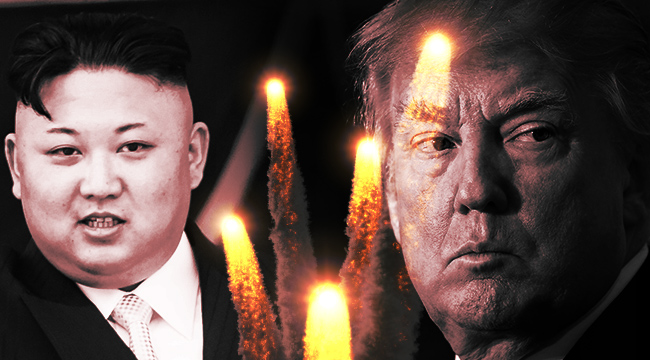
In the latest move of a war of words between Donald Trump and North Korea, the U.S. has deployed THAAD, the Terminal High Altitude Area Defense missile system, in South Korea. So what is it, and why is it being seen as an act of aggression?
THAAD can’t really be used to attack a country; in fact, it’s not even equipped with explosives. First proposed in 1987 and deployed in 2008, THAAD is essentially a battering ram for missiles. Using powerful radar, it can track short, medium and intermediate ranged ballistic missiles and destroy them with kinetic energy; that is, it smashes the missile. This is a particularly useful defense system because it won’t trigger any warheads on the destroyed missile. Think of it as a way to checkmate a launch before it even happens.
And South Korea has been interested in THAAD for a while. In 2013, it began investigating the system as North Korea began pounding its chest more publicly, at first to develop its own missile defense system. That said, deployment is controversial, especially in this case.
To start with, it’s not clear how much input, if any, South Korea had in the decision. South Koreans have a relationship with the U.S. and American military that’s complicated, at best, and the current corruption scandal roiling the government couldn’t have come at a worse time. Many South Koreans feel stuck between the U.S. and China, neither of which seem to care that it’ll be Koreans suffering the brunt of whatever decision they make, and that their government isn’t able to defend their interests. Not helping here is that possession is nine-tenths of the law; once the system is installed, it’ll be more difficult to get rid of.
China’s objection, on the surface, is fairly straightforward: THAAD needs powerful, long-range radar in order to work, and that means it might violate their borders. That said, the issue is complicated by North Korea being, at least technically, an ally of China. Deploying THAAD isn’t just a defense measure; it would allow the U.S. to strike North Korea while limiting North Korea’s ability to respond. So, installing the system can either be interpreted as raising a shield or cocking a gun, depending on your perspective and your belief of the real motive behind installing it. It’s unlikely that North Korea will interpret it as anything other than an act of aggression, however.
In short, while THAAD is only a defensive system, it’s not the system itself that’s the problem. The problem is whether the system is really installed just to defend South Koreans, or if it’s a prelude to a preemptive strike by Trump.
